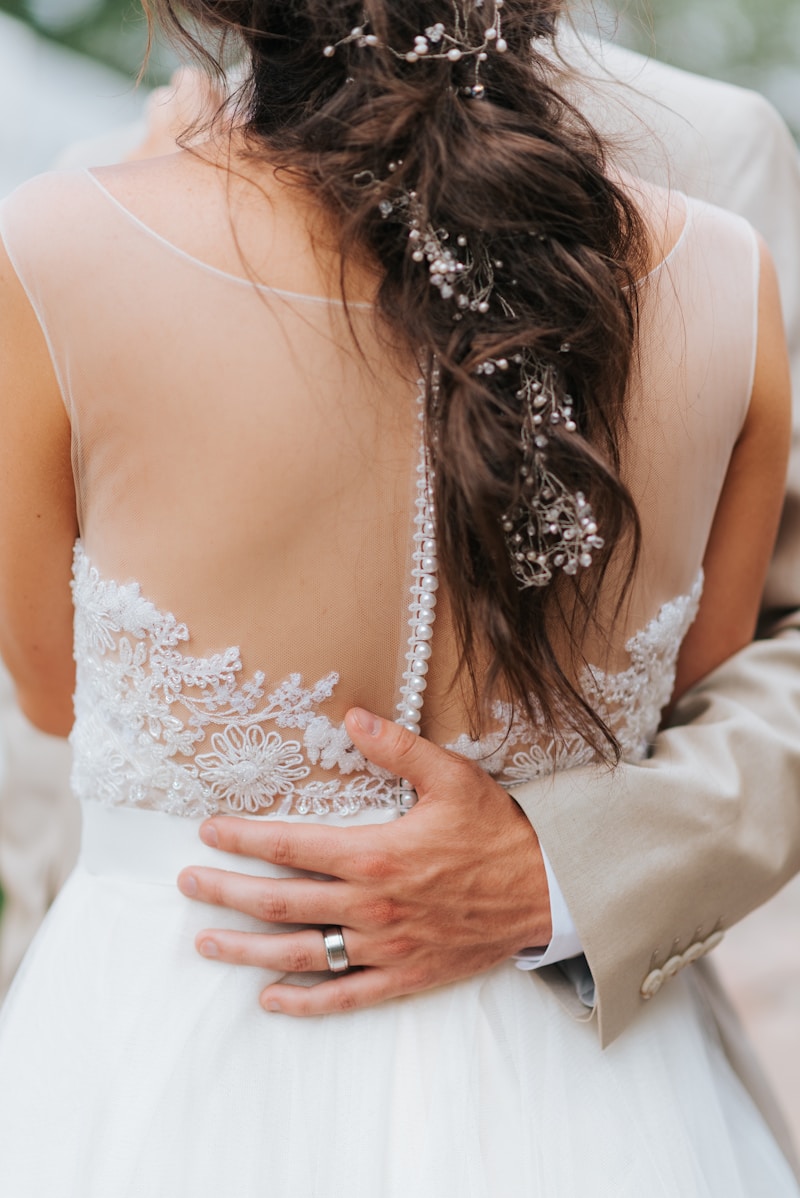Mastering Layering Techniques for Brides: A Comprehensive Guide
Introduction to Layering Techniques for Brides
Layering techniques for brides have become increasingly popular in recent years, offering a stunning way to enhance the bridal look while providing versatility and comfort. These techniques can transform a simple gown into a multi-dimensional couture creation, allowing brides to express their personal style on their special day. In this article, we will explore various layering techniques, their benefits, and how to execute them effectively.
Understanding Layering Techniques
Layering techniques involve combining multiple garments or fabrics to create a cohesive, visually interesting bridal ensemble. Some common layering methods include:
- Adding underskirts and petticoats
- Incorporating boleros or jackets
- Utilizing overlays and capes
- Wearing veils and accessories
The Benefits of Layering for Brides
Layering offers specific advantages that can enhance the overall bridal experience, including:
| Benefit | Description |
| Versatility | Different layers can be added or removed to suit the occasion. |
| Styling Options | Layering creates unique looks that can reflect the bride's personality. |
| Comfort | Layering allows for adjustments in temperature or movement. |
| Visual Interest | Adds depth and dimension to the bridal ensemble. |
Popular Layering Techniques for Brides
1. Underskirts and Petticoats
One of the most common layering techniques involves the use of underskirts and petticoats. These pieces can add volume to a gown, creating a fuller silhouette. Consider experimenting with various lengths and materials to achieve the perfect look. For instance, a lightweight tulle petticoat can give a delicate, ethereal feel, while a satin underskirt can provide luxurious weight and drape.
2. Boleros and Jackets
Boleros and jackets are fantastic layering options for brides looking for additional coverage, especially for fall or winter weddings. These pieces add sophistication and elegance to the outfit. Choose fabrics that complement the main gown and consider textures like lace for a romantic style or silk for a modern twist. Remember, the closure styles (buttons, zippers, or hooks) should also align with the overall wedding theme.
3. Overlays and Capes
Overlays and capes can change the entire vibe of a bridal gown. A sheer lace overlay can soften a structured dress, while a dramatic cape can transform a simple gown into a show-stopping masterpiece. Focus on the fabric’s transparency and flow; this way, the layers will beautifully interact with one another, enhancing the bridal look. The cape can also serve a practical purpose, providing warmth or modesty.
4. Veils and Accessories
Veils and accessories are crucial in the layering game. A long veil can create an enchanting effect, framing the bride beautifully. Meanwhile, accessories such as belts, sashes, and statement jewelry can define the waist and add sparkle. When incorporating these elements, always consider the overall color palette and theme of the wedding. For instance, a floral crown can give a bohemian vibe, while a structured headpiece may suit a more classic approach.
Choosing the Right Layers
When selecting layers, it’s important to keep the following tips in mind:
- Comfort is Key: Ensure the layers you choose allow for movement and do not compromise comfort.
- Proportions Matter: Consider how different layers will proportionally enhance or overwhelm your look. Balancing volume is critical.
- Color Coordination: Make sure the colors of your layers complement your gown. Whites, ivories, and neutrals can serve as a base, while bolder colors can add a unique touch.
- Consult Professionals: Bridal stylists and seamstresses can offer invaluable advice on the best layering techniques tailored for your body type and style.
Layering Techniques for Different Wedding Themes
Different wedding themes may call for varying approaches to layering. Here are some examples:
- Bohemian Style: Embrace flowy fabrics and delicate lace overlays paired with floral crowns and layered necklaces.
- Classic Elegance: Opt for structured boleros, vintage lace veils, and sophisticated accessories.
- Rustic Charm: Consider adding a simple denim or leather jacket over a lightweight gown, complete with a floral lace overlay.
- Modern Minimalism: Play with clean lines by layering sleek fabrics, focusing on a monochromatic color scheme with subtle textures.
Final Touches
The finishing touches can make a significant impact on your layered bridal look. Pay attention to the following:
- Makeup and Hair: Ensure that your hair and makeup complete the layered aesthetic without overshadowing the overall look.
- Footwear: Choose shoes that are not only stylish but comfortable enough for a long day of standing and dancing.
- Emergency Kit: Keep a small kit handy for quick touch-ups or wardrobe malfunctions; items like fashion tape can save the day.
Conclusion: Embracing Layering Techniques for Your Big Day
Mastering layering techniques for brides allows for personal expression and a unique style that sets you apart on your wedding day. Remember to balance comfort and aesthetics while taking into account your wedding theme and personal style. Whether you prefer classic elegance, bohemian flair, or modern minimalism, layering can enhance your bridal look remarkably. As you plan your special day, consider consulting with professionals and incorporating your unique touches into your layered look. With thoughtful execution, layering creates stunning bridal ensembles filled with beauty and personality.
In summary, layering is not just a technique but an art form that can elevate your bridal attire. Embrace these techniques to make your wedding day a memorable and stylish occasion.
